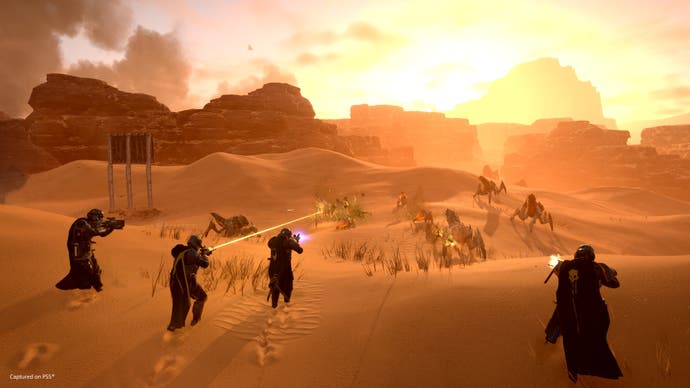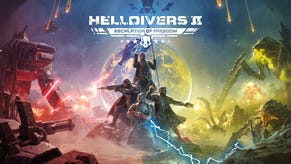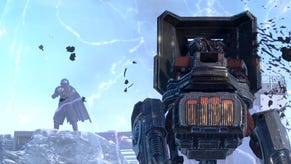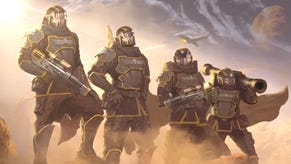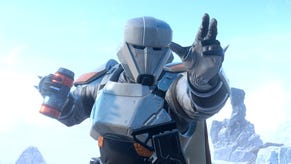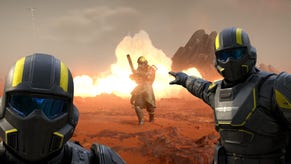Helldivers 2's double-A energy is an antidote to video game malaise
AAAA!!!
Ragdoll physics! Friendly fire! Connectivity issues! On-the-nose satire! Bugs! Double-A gaming is back, baby. You could argue it never really went anywhere, but still: what a breath of fresh air this one's proven to be.
Helldivers 2 is a blast; a messy, frenetic, straight-into-the-action whirlwind of quickfire jokes quickplay matches (when they're working). If you played even the slightest bit of the first Helldivers, though, none of this should come as a surprise.
"This is also the latest game from Magicka developer Arrowhead Game Studios - a studio, right, whose logo shows an arrow going through somebody's head. In other words, you should expect a few quirks. The biggest of these is friendly fire: it is so terribly easy to shoot your own team-mates in Helldivers. It's so terribly easy to be shot by your own team-mates. Or stepped on by them if they've unlocked mechs. Hell really is other people." That's what we said in our review of the first Helldivers, way back in 2015, a game that was cross-buy across PS3, PS4 and - hold me - the Vita. This could just as easily be describing Helldivers 2, although I've yet to see anyone unlock their own mechs just yet. If anything, the biggest surprise is how little it's changed.
To put it another way: Helldivers 2 is Arrowhead's first attempt at a proper third-person shooter, but it also somehow plays almost exactly like Helldivers, a twin-stick shooter with a bird's eye perspective. It's as though Arrowhead's spent the last nine years carefully picking up the in-game camera and manually carrying it to a different spot in the same world. Even the little things linger: the way turning while shooting adds a wonderful little delay to your aim - a shmup staple, that - your big gun's trail of bullets playing catch-up to your frantically darting eyes with its own big, arcing waft around the corner. And how those drop-pods - sorry, Hellpods - drill down into the earth on landing, raising you back up to the surface, statuesque. Your boots strapped into the floor like some kind of pop-up action figure still half-wired into the box. And the amount of times I've killed and died by that friendly fire.
Really, Helldivers 2 is a great leveller, but where the levelling's all done in reverse - everyone here is an equally total bonehead. The other day I walked straight in front of my friend shooting a sniper rifle. Over the weekend I saw someone on Twitter say they died by blowing up a giant alien and getting crushed under one of its falling legs. My Hellpod meanwhile seems to be drawn to my own squadmates' heads like a heat-seeking missile (which I may or may not be deliberately guiding).

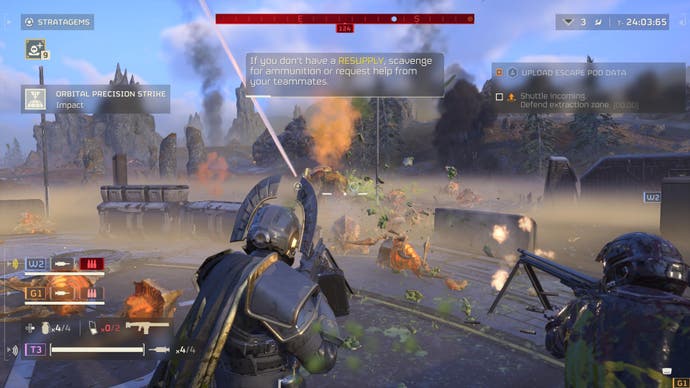
You can see the Magicka heritage here - a friendly fire-fuelled, if-this-then-that classic. Helldivers 2 is also wonderfully systemic, a game of weird little moments of pure logic amongst pure stupidity. How might one blow up a research station for a main objective, when no dedicated little "hold X to plant bomb" button prompt wants to appear? Just throw a few grenades at it, obviously, or call in an orbital strike on its roof. You can shoot down dropships before they deliver the fresh batch of pseudo-Terminators, tip over wobbly mechs to leave them wiggling around like a naive young contestant's debut entry on Robot Wars and, of course, propagate your flamethrower's fire.
A final ingredient in the special sauce though, I reckon, is the fact that so little of this is ever explicitly explained. Helldivers 2 has a good tutorial - I left it knowing how to duck and dive and successfully shoot my gun - but after that you're on your own, a glove-like fit for it's ridiculous space-jingoist theme of sending fresh patriots out to die, but also a little stroke of genius, I suspect. The result is a game that makes you feel like an idiot, yes, but also a clever idiot - the kind of clever idiot who figures things out. Who skipped on the elaborate mechanisms to just build a big dumb bridge in Tears of the Kingdom, or cheesed their way through puzzle-shrines with a time-frozen object and a few good whacks of a club in Breath of the Wild.
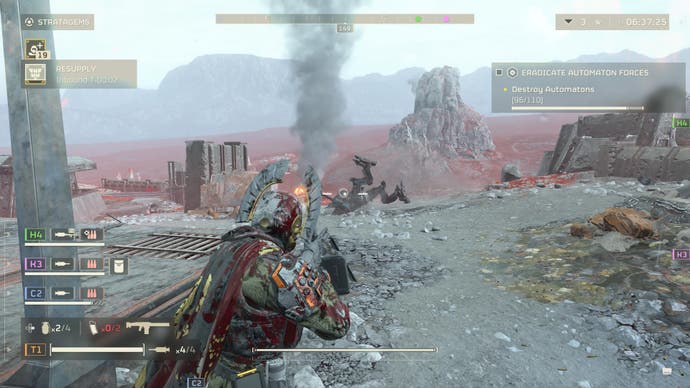
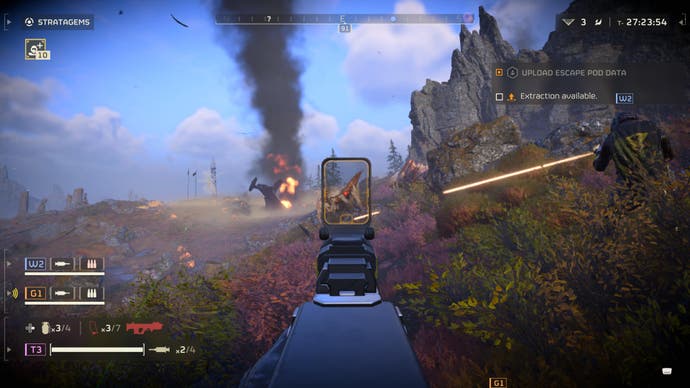
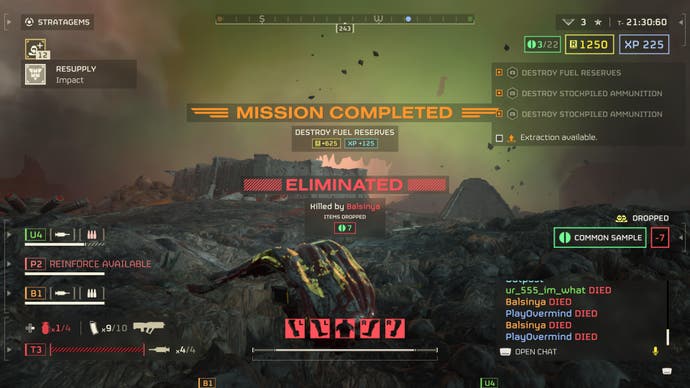

The timing feels significant. If you'll forgive the rather sudden gear-shift, in the background of all this fun the triple-A video game industry is wobbling. Games are in the midst of a soul-crushing wave of layoffs - but also a kind of existential crisis, driven in part by an argument, with growing traction, that suggests a good portion of this has been caused by their leadership's own misguided ambition. Thanks in part to a doomed quest for prestige game status - a lust for ever-increasing fidelity above all - big video games are suffering ballooning development costs. Costs are now so high even rising game prices, rising sales, and near-ubiquitous live service models are still struggling to pay them off.
At the same time as that, games Twitter is in a tizz over another PlayStation console exclusive, in Final Fantasy 7: Rebirth and its dreaded yellow paint. "Yellow paint" here meaning the desperately patronising but - in certain games where climbing happens, but not as an organic, contextualised, or in any way systemic mechanic - utterly necessary approach to telling players which ledges they're able to climb. It's far from the first outing that topic's had in Twitter/X's perpetual cycle of arguments, but it's something brought about by the quest for fidelity again, via the natural unreadability of more detailed worlds.

Squint hard enough at Helldivers 2 then, and amongst the sheer joy of it you might also find something of a lesson. Blockbusters are increasingly guilty of holding the player's hand, be that with a certain yellow paint or, more recently, some of history's most over-talkative protagonists (the kind who yell out loud to no-one about exactly what blatantly glowing weak spot you should shoot during boss fights, or spoil puzzle solutions before you've even begun to start). They're relentlessly polished. They are frightfully self-serious and po-faced. Each one arrives as a kind of self-declared revolution in storytelling or technical craft - in part, you suspect, because they need to achieve equally revolutionary sales to have any chance of recouping their costs. And they are, as we've seen recently, unfortunately not doing that often enough.
Meanwhile, the developer of an instant smash-hit with its global servers at capacity, a trust-based approach to teaching its players, a riotous sense of humour, deviously systemic-ish design, and surely a fraction of the typical triple-A budget has this quote on the front page of its website: "A game for everyone is a game for no one." It's far too simple to say we should merely take their word - or that blockbusters should, somehow, all conform to the ideals of Helldivers 2. But if video games are looking for answers right now, this one might be a good place to start.
